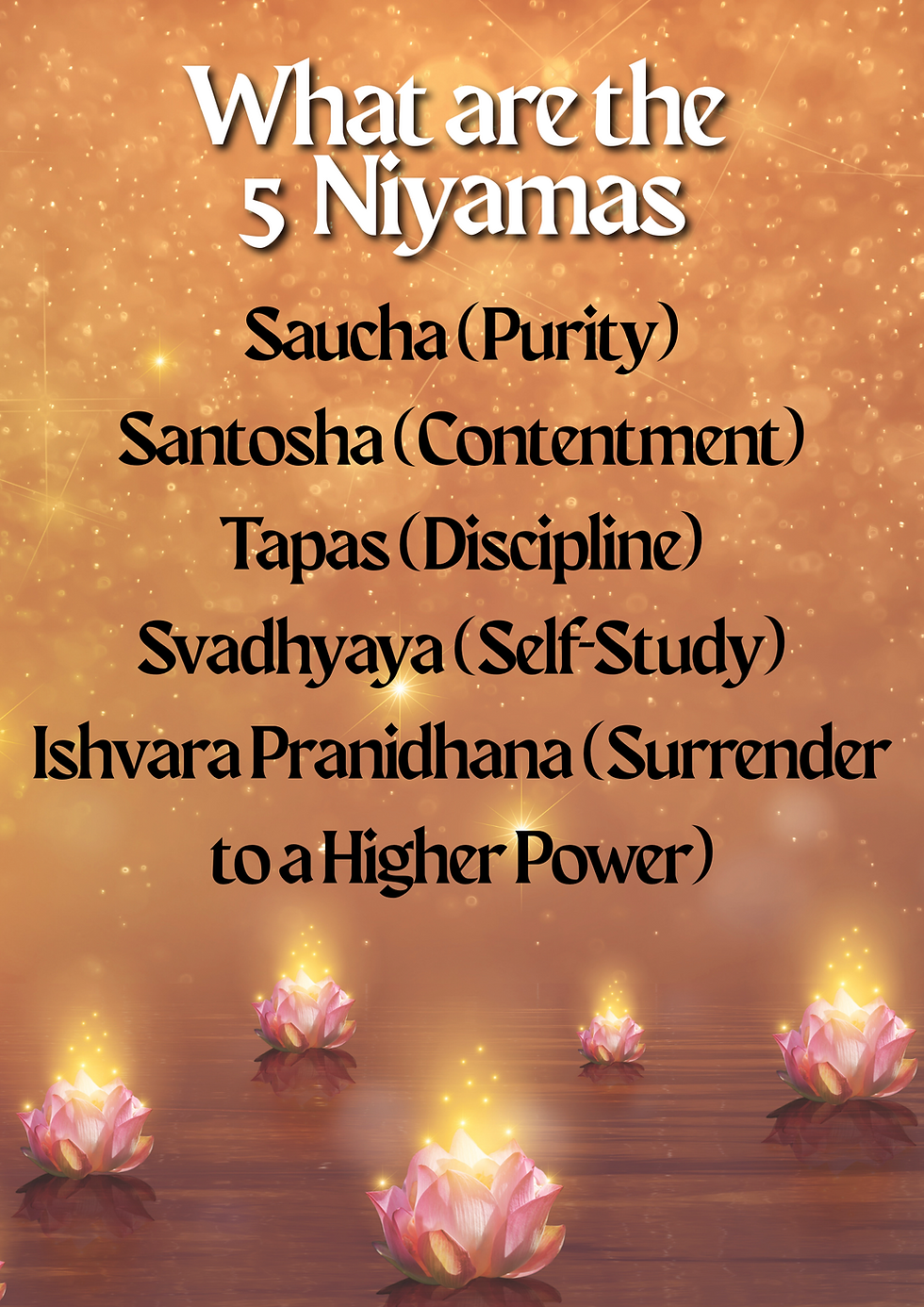What are the Yamas and Niyamas of Yoga? A Guide for Children
- myNachiketa
- Sep 24
- 3 min read

Imagine if there were easy rules for living a happy, kind, and respectful life. Well, in the world of yoga, there are—the Yamas and Niyamas! These are like special guidelines that help us connect with ourselves and the world around us. The roots of these ideas go deep into the teachings of Patanjali’s Yoga Sutras, a collection of wise thoughts. So, let’s explore these fun and meaningful principles together!
What Are Yamas?

The Yamas are the 'dos' and 'don’ts' of how we treat others and ourselves. Imagine them as a super-cool list of five rules that help us be better friends and citizens. Let’s dive into each one!
Buy our books to explore more inspiring stories and lessons for children
1. Ahimsa (Non-Violence)
Meaning: This principle teaches us to be kind and not harm anyone, whether through our words or actions.
Example for Kids: If you see someone being bullied at school, you can stand up for them or tell an adult rather than ignoring it. Kindness is like a superpower; it can change someone's day!
2. Satya (Truthfulness)
Meaning: Being honest in what we say and do is vital.
Example for Kids: If you accidentally break a toy, instead of hiding it, tell the truth about it. It teaches you to be brave and trustworthy, just like Bhagwan Rama!
3. Asteya (Non-Stealing)
Meaning: This principle focuses on not taking what doesn't belong to us, whether it’s toys or time.
Example for Kids: If your friend lent you a book, remember to return it, because borrowing means to give back. Respecting others’ belongings is important.
4. Brahmacharya (Moderation)
Meaning: This is about finding balance and not overdoing anything—whether it’s playing games or eating sweets.
Example for Kids: If you love playing video games, make sure to also spend time outside or doing homework. Balance keeps everything fun and healthy.
5. Aparigraha (Non-Possessiveness)
Meaning: This means to let go of our need to keep everything and instead, share with others.
Example for Kids: Have a toy that you don’t play with anymore? Why not donate it to someone who will enjoy it? Sharing is caring!
What Are Niyamas?

Niyamas are all about self-discipline and personal growth. They tell us how we can be better individuals and friends. Let's take a look at these five guiding stars!
1. Saucha (Purity)
Meaning: This principle reminds us to keep our bodies and minds clean.
Example for Kids: Always wash your hands before eating and keep your room tidy. A clean space helps your mind feel fresh and focused!
2. Santosha (Contentment)
Meaning: This teaches us to be happy and grateful for what we have.
Example for Kids: Instead of wanting a new game, take a moment to appreciate the games and toys you already have. Gratitude makes you joyful, just like the happiness of Bhagwan Krishna!
3. Tapas (Discipline)
Meaning: This principle encourages us to work hard and stay committed to our goals.
Example for Kids: If you're practising for a sport or an exam, stick to your training schedule and don't give up. Perseverance is key to success!
4. Svadhyaya (Self-Study)
Meaning: It's important to know ourselves, our strengths, and areas for improvement.
Example for Kids: Keep a diary where you can write about your feelings or things you learn each day. This helps in understanding yourself better.
5. Ishvara Pranidhana (Surrender to a Higher Power)
Meaning: This encourages us to trust and show devotion to something greater than ourselves.
Example for Kids: This could be through prayer or spending time in nature, appreciating the beauty around you. Feeling connected can bring peace like the calm waters of oceans.
Conclusion
By following the Yamas and Niyamas, we can learn to be kind, honest, brave, and happy. These teachings, rooted in ancient wisdom, guide us on how to interact positively with others while caring for ourselves. They are pearls of wisdom that help us build friendships, create joyful memories, and become better human beings. So, let’s embrace these principles and live life like a rainbow—full of different beautiful colours!

More such blogs
Resources





















Comments